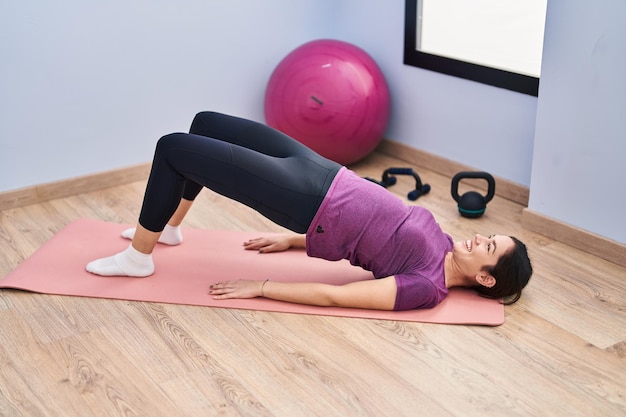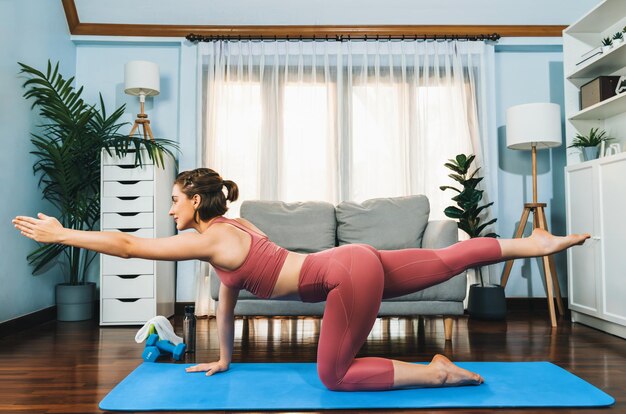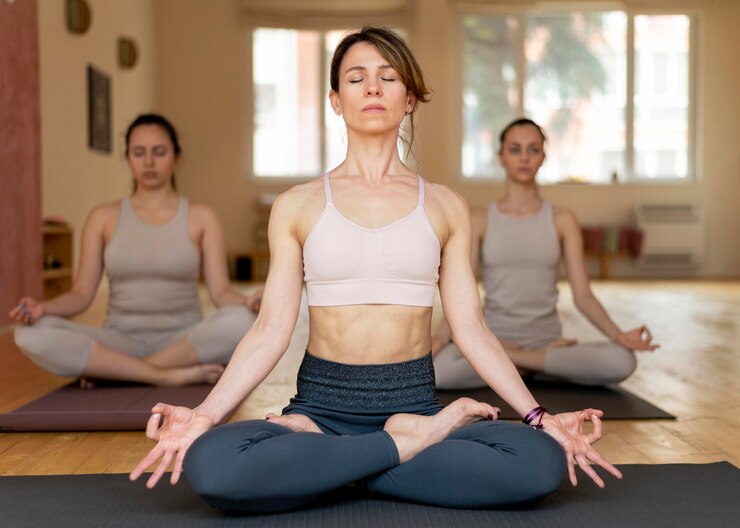
Discover a comprehensive guide on chest stretches to enhance flexibility and posture. Explore effective techniques and tips for incorporating them into your routine.
Introduction
Chest stretches are fundamental exercises for enhancing flexibility, improving posture, and reducing muscle tension in the upper body. Whether you’re an athlete, a fitness enthusiast, or someone who spends long hours at a desk, incorporating chest stretches into your routine can significantly benefit your overall well-being. This comprehensive guide delves into various chest stretches, providing detailed instructions and benefits for each exercise. Understanding these stretches and how to perform them correctly will help you achieve a more flexible and healthy chest area, contributing to better posture and reduced risk of injuries.
Understanding the Importance of Chest Stretches
Chest stretches play a crucial role in maintaining upper body flexibility and health. When you engage in regular stretching exercises, especially targeting the chest muscles, you facilitate increased blood flow and oxygen to the muscles. This process not only helps in loosening tight muscles but also in improving overall range of motion. Additionally, consistent stretching can counteract the negative effects of poor posture, which is a common issue among individuals who spend extended periods sitting at desks or working on computers. By incorporating chest stretches into your routine, you can enhance your physical performance and prevent potential injuries caused by muscle stiffness and poor posture.
The Benefits of Regular Chest Stretching
Engaging in chest stretches regularly provides numerous benefits that contribute to overall health and wellness. Firstly, these stretches improve muscle flexibility, which is essential for maintaining an optimal range of motion in the upper body. Enhanced flexibility allows for more fluid movements and can reduce the risk of strains and injuries during physical activities. Furthermore, regular stretching helps alleviate muscle tension and soreness, which is particularly beneficial for individuals who experience discomfort from prolonged sitting or strenuous exercises. Additionally, incorporating chest stretches into your routine can promote better posture by counteracting the effects of slouching and rounding of the shoulders.
How to Perform the Chest Expansion Stretch
The chest expansion stretch is a simple yet effective exercise that targets the chest muscles, promoting flexibility and improved posture. To perform this stretch, stand or sit with an upright posture, interlace your fingers behind your back, and straighten your arms. Gently lift your arms while pushing your chest forward and squeezing your shoulder blades together. Hold this position for 20 to 30 seconds, ensuring that you maintain a deep and steady breath throughout the stretch. This exercise helps open up the chest, releasing tightness and encouraging better posture. Remember to keep your shoulders down and avoid overextending your arms to prevent any strain.

Mastering the Wall Stretch Technique
The wall stretch is an excellent exercise for targeting the chest and shoulder muscles. To execute this stretch, stand facing a wall with one arm extended at shoulder height. Place your palm on the wall, and slowly turn your body away from the wall, keeping your arm straight. You should feel a gentle stretch across your chest and the front of your shoulder. Hold this position for 20 to 30 seconds, then repeat on the opposite side. This stretch effectively targets the pectoral muscles and helps alleviate tightness in the chest area, promoting improved flexibility and mobility.
Exploring the Doorway Stretch Method
The doorway stretch is a highly effective exercise for opening up the chest and improving posture. To perform this stretch, stand in a doorway with your arms positioned at a 90-degree angle, resembling a goalpost. Place your forearms on the doorframe and step forward with one foot, gently leaning into the stretch. You should feel a noticeable stretch across your chest and the front of your shoulders. Hold the stretch for 20 to 30 seconds, then switch sides. This exercise targets the pectoral muscles and helps counteract the effects of poor posture and tightness caused by prolonged sitting.
Performing the Seated Chest Stretch Properly
The seated chest stretch is an effective exercise for those who prefer to stretch while sitting. Begin by sitting on the edge of a chair with your hands resting on the back of your head, and keep your elbows wide. Gently press your head into your hands while opening your elbows wide and pushing your chest forward. This action helps stretch the chest muscles and can alleviate tension accumulated from sitting. Hold the stretch for 20 to 30 seconds, ensuring that you maintain a relaxed and steady breathing pattern throughout the exercise.
Utilizing the Ball Stretch for Flexibility
The ball stretch is a dynamic exercise that enhances chest flexibility while providing support through a stability ball. To perform this stretch, lie on a stability ball positioned under your upper back. Allow your arms to fall to the sides, palms facing up, and let gravity gently stretch your chest muscles. Hold this position for 20 to 30 seconds, focusing on deep, controlled breaths. The stability ball helps open up the chest area, promoting relaxation and improving flexibility. This stretch is particularly useful for individuals seeking to relieve tension and enhance upper body mobility.
Performing the Floor Chest Stretch Effectively
The floor chest stretch is a simple yet effective exercise that targets the chest and shoulder muscles. Begin by lying face down on the floor with one arm extended out to the side at shoulder height. Push with your opposite hand to gently roll your body away from your extended arm, feeling the stretch in your chest and shoulder. Hold this position for 20 to 30 seconds, then switch sides. This stretch helps release tightness in the pectoral muscles and promotes better flexibility and mobility in the upper body.
Incorporating Dynamic Chest Stretches
Dynamic chest stretches involve controlled, rhythmic movements that help warm up the muscles and improve flexibility. One effective dynamic stretch is arm circles. Stand with your feet shoulder-width apart and extend your arms out to the sides at shoulder height. Begin making small circles with your arms, gradually increasing the size of the circles. After 10 to 15 seconds, reverse the direction of the circles. This exercise helps loosen up the chest and shoulders while preparing them for physical activity. Dynamic stretches are particularly useful as part of a warm-up routine before engaging in more intense exercises or activities.

Exploring the Child’s Pose with a Twist
The child’s pose with a twist is a versatile stretch that targets the chest, shoulders, and upper back. Start in a child’s pose with your arms extended in front of you, and gently thread one arm under the opposite arm, reaching towards the opposite side. Rest your shoulder on the floor and hold the stretch for 20 to 30 seconds. This position helps open up the chest and improve flexibility in the upper body. After completing one side, switch to the other side to ensure balanced stretching. This stretch is particularly beneficial for relieving tension and enhancing overall upper body mobility.
Understanding the Benefits of Chest Stretches for Posture
Regular chest stretches play a significant role in improving posture by counteracting the negative effects of poor sitting habits and muscle imbalances. When the chest muscles become tight and shortened, they can contribute to rounded shoulders and a slouched posture. By incorporating chest stretches into your routine, you can help lengthen and relax the pectoral muscles, promoting a more upright and aligned posture. Improved posture not only enhances your physical appearance but also contributes to better breathing, reduced back pain, and overall well-being.
Tips for Effective Chest Stretching
To maximize the benefits of chest stretches, consider the following tips. First, ensure that you perform each stretch with proper form and alignment to prevent injury and achieve optimal results. Second, hold each stretch for 20 to 30 seconds, and avoid bouncing or jerking movements, which can cause strain. Additionally, breathe deeply and steadily throughout each stretch to enhance relaxation and muscle release. Incorporating chest stretches into your daily routine or workout regimen can contribute to improved flexibility, reduced muscle tension, and overall upper body health.
Addressing Common Mistakes in Chest Stretching
When performing chest stretches, it’s important to avoid common mistakes that can hinder effectiveness and lead to injury. One common mistake is overstretching, which occurs when you push beyond your comfortable range of motion. This can strain the muscles and lead to discomfort or injury. Another mistake is failing to maintain proper alignment, which can reduce the effectiveness of the stretch and potentially cause harm. Ensure that you perform each stretch with controlled movements, proper form, and within a comfortable range to avoid these common pitfalls and achieve the best results.
Integrating Chest Stretches into Your Fitness Routine
Incorporating chest stretches into your fitness routine can enhance your overall exercise performance and recovery. Begin by adding these stretches as part of your warm-up routine to prepare your muscles for more intense activities. Additionally, perform chest stretches after your workout or physical activity to promote muscle relaxation and prevent stiffness. Regularly including these stretches in your routine can contribute to improved flexibility, reduced muscle tension, and overall upper body health. Consider creating a balanced routine that combines chest stretches with other exercises to achieve comprehensive fitness benefits.
Adapting Chest Stretches for Different Fitness Levels
Chest stretches can be adapted to suit various fitness levels and individual needs. For beginners, start with gentle stretches and focus on achieving proper form and alignment. As you progress, you can incorporate more advanced stretches and increase the intensity of the exercises. If you have specific limitations or injuries, consider modifying the stretches to accommodate your needs or consult with a fitness professional for personalized guidance. Adapting chest stretches to your fitness level ensures that you can safely and effectively achieve the benefits of improved flexibility and upper body health.

Utilizing Chest Stretches for Injury Prevention
Incorporating chest stretches into your routine can play a key role in preventing injuries, especially for individuals engaged in regular physical activity or sports. Tight chest muscles can contribute to muscle imbalances and increase the risk of strains and injuries. By performing regular chest stretches, you can enhance muscle flexibility, reduce tension, and improve overall upper body mobility. This proactive approach to injury prevention helps maintain optimal muscle function and reduces the likelihood of injuries caused by tightness or imbalances.
Exploring Variations of Chest Stretches
To keep your stretching routine diverse and engaging, consider exploring variations of chest stretches. For example, you can modify the wall stretch by adjusting the height of your arm or the angle at which you turn your body. Additionally, experiment with different arm positions and angles in the doorway stretch to target various areas of the chest. Incorporating different variations can help you address specific muscle groups, prevent boredom, and ensure a well-rounded stretching routine that promotes overall chest flexibility and health.
Combining Chest Stretches with Strength Training
Combining chest stretches with strength training exercises can enhance overall upper body fitness and performance. Incorporate chest stretches into your warm-up routine before engaging in strength training exercises such as bench presses or push-ups. Additionally, performing stretches after your workout helps promote muscle recovery and flexibility. This combination of stretching and strength training contributes to improved muscle function, reduced risk of injury, and overall upper body strength. Create a balanced fitness routine that includes both stretching and strength training to achieve comprehensive benefits.
The Role of Chest Stretches in Overall Wellness
Chest stretches contribute to overall wellness by promoting physical flexibility, reducing muscle tension, and improving posture. Regularly incorporating these stretches into your routine can enhance your quality of life by improving your ability to perform daily activities with ease and comfort. Additionally, better posture and increased flexibility can positively impact your mental and emotional well-being, contributing to a more balanced and healthy lifestyle. Embrace the benefits of chest stretches as part of your overall wellness journey to achieve optimal physical and mental health.
Addressing Frequently Asked Questions about Chest Stretches
Addressing common questions about chest stretches can help individuals better understand how to incorporate them into their routines effectively. Common inquiries may include how often to perform chest stretches, how to modify stretches for specific needs, and the best time to stretch. For optimal results, aim to perform chest stretches at least 2-3 times per week, and make modifications as needed to accommodate your fitness level and individual needs. Additionally, consider incorporating chest stretches into your warm-up and cool-down routines for enhanced benefits.
Conclusion
Chest stretches are an essential component of a well-rounded fitness routine that promotes flexibility, improved posture, and overall upper body health. By incorporating a variety of chest stretches into your routine, you can effectively address muscle tightness, enhance flexibility, and support overall wellness. Whether you’re a beginner or an experienced fitness enthusiast, embracing the benefits of chest stretches can contribute to a healthier and more balanced lifestyle. Commit to incorporating these stretches into your routine and enjoy the positive impact on your physical and mental well-being.
Read also: Understanding dowager’s hump: An Overview





